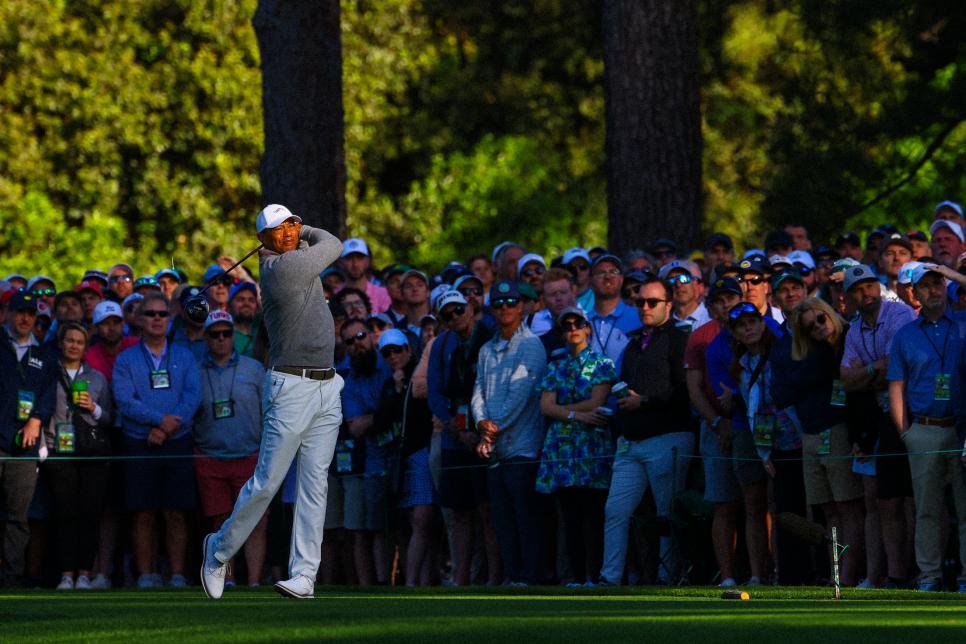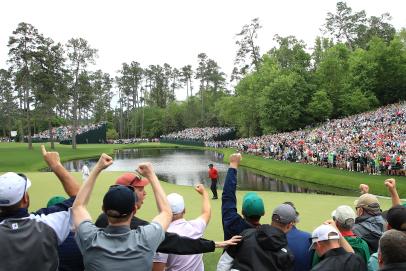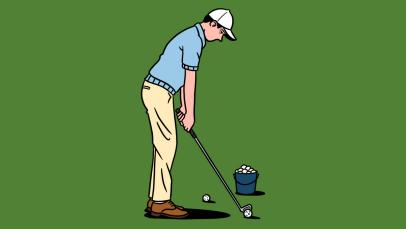This is a free article version of Low Net, a weekly newsletter written for the average golfer, by an average golfer. To get Low Net each week, sign up for Golf Digest+.
Have a topic you want me to explore? Send me an email and I'll do my best to dive in.
AUGUSTA, Ga.—This is my 20th trip to the Masters, and increasingly I find myself watching a different tournament than everyone else. It’s not that I don’t care about the usual stuff. But most of my time is spent trying to connect the elite golf I watch at Augusta National to the uneven golf I play at home.
The question when observing the game through this self-absorbed prism is what can be transferred to a mid-handicapper's game and what’s beyond my skill set. I will never approach Rory McIlroy’s ball speed, and if I attempted Scottie Scheffler’s follow through, I fear I’d end up in the ER. But after consulting with Golf Digest Top 50 teacher Michael Breed, on site this week for CBS Sports Network, we arrived at a few takeaways that could work for you immediately.
Lesson #1: Practice and warm-up with purpose

Follow a tour player’s practice routine and they spend an inordinate amount of time on their short games. This exposes the first flaw in average-golfer thinking. Who misses more greens? Players like me. Who prefers to practice full shots over our short games? Same group. The players who have the most variability in their games are the ones who prepare for that variability the least. This extends to a problem with our warm-ups as well. When tour players warm up, they are not working on technique, yet they will at least test the shots they expect to hit during their rounds.
“Average players don’t prepare for the specific shots they’re going to hit on the golf course,” Breed said. “If you know that you’re going to have an 8-iron or 6-iron on a par 3, that’s a shot you should practice.”
Lesson #2: Pick a shot and ‘find out’ if it works
.jpg.rend.hgtvcom.966.690.suffix/1712946529141.jpeg)
On Wednesday, I watched Tom Kim and caddie Paul Tesori deliberate between a 4- and 5-iron on Kim’s approach to 11. The conversation went on for minutes, but once Kim picked a club, it was over. Breed has a favorite phrase for when golfers arrive at this moment: “Find out.” His point is that there is great value in analyzing a choice, but once you’ve made your selection, the only thing left is to see if you were right.
“Tour players are meticulous in their decision, but once they make their decision, they are fully committed to the shot they’re going to play,” Breed said.
This relates to a few other lessons.
Lesson #3: Don’t slow down
On the par-3 fourth hole, I watched a parade of players pull a club on the tee and assess the shot in front of them. Some, like Jon Rahm and Rory McIlroy, made slow, abbreviated swings to ingrain a feel. Others, like Matt Fitzpatrick, rehearsed the full shot. You might see top golfers swing deliberately away from the ball, but on the real shot swing faster. The rest of us do the opposite. My golf friends like to say I have a great practice swing, which would sound like a compliment if it wasn’t also a reflection of how it differs from the real thing. According to Breed, the average player swings roughly seven percent slower on a real shot than on their practice swing, which is a function of commitment (see above) or the wrong target (see below).
Lesson #4: The target is in front of you, not at your feet
Golf television producers are skilled at keeping the action moving, but they occasionally deprive viewers the crucial little moments that lead up to a shot. In person, you’ll see a player look down at the ball, then up. They’ll make a small waggle, then up again. At every moment before swinging, their focus is on where the ball will go instead of contact. Maybe it’s asking too much for you to forget about the ball outright, but Breed says it’s essential you shift more of your attention to a target—whether it’s where you want the ball to start, or hope it to finish.
“I would say every player you see this week will have a target over every shot,” Breed said. “Whether they shoot 64 or 74, they will never not have that in mind.”
Lesson #5: Speed over line, every time

Ben Walton
Breed’s last lesson centers on a concept that might be the most difficult to detect. I watched Chris Kirk before his first round Thursday roll a half dozen putts from 20 feet away. That he didn’t make any of them is almost irrelevant. More important is they all stopped inches away.
“Tour pros will always, always, always focus on speed, particularly at Augusta National,” Breed said. “The amateur will rarely focus on speed and mostly focus on the line. Yet it’s the speed that makes the line. When you get that wrong, the line will be off as well.”
As Breed noted, it’s a lot to ask players who have real jobs to try to replicate shots executed from people with more inherent talent and more time to train. But these are some lessons you can put in play tomorrow—and without much work.
What if a guy like me actually got a chance to play here? Actually, I do. I won the lottery to play Monday! More to come on that, but you can be sure I'll be consulting Chris Powers and Steve Hennessey' handy “bogey golfer’s guide to surviving Augusta National.”


.jpeg.rend.hgtvcom.406.271.suffix/1712342613478.jpeg)
